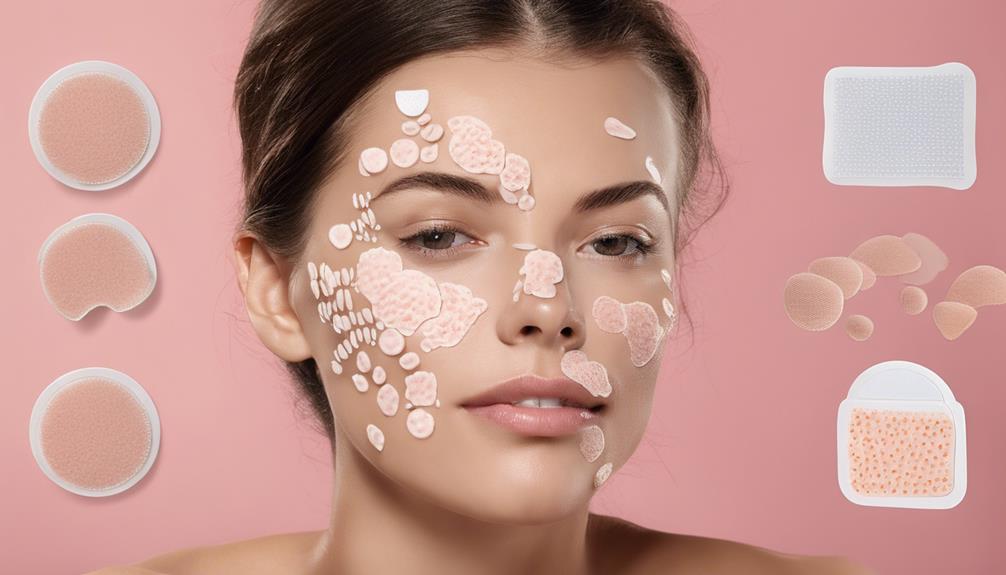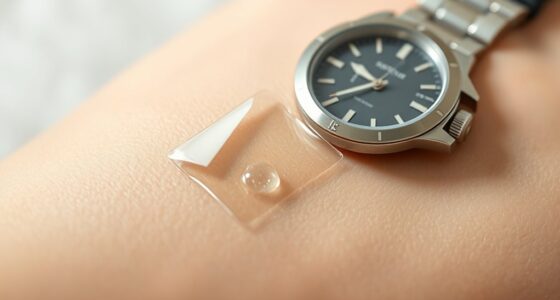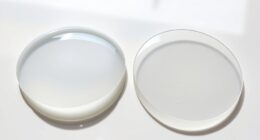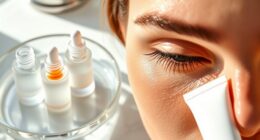Pimple patches function by absorbing fluid, assisting in faster healing, creating a barrier against picking, and minimizing inflammation and redness. They include ingredients such as salicylic acid, tea tree oil, and hyaluronic acid that target acne and support skin health. Various kinds are tailored to specific skin requirements, but they are primarily spot treatments, most effective for open pimples. However, closed or severe acne may not experience the same advantages. View them as complementary to other treatments like salicylic acid or oral medications. Pimple patches can help enhance skin health and accelerate healing, with different strengths and limitations based on various skin types.
Key Takeaways
- Pimple patches work by absorbing fluid, reducing inflammation, and preventing picking, aiding in faster healing.
- Hydrocolloid material creates a healing environment, promoting clearer skin and preventing scarring.
- Ingredients like salicylic acid and tea tree oil target acne-causing factors, enhancing effectiveness.
- They are best for open pimples, helping to accelerate healing and maintain skin health.
- Dermatologist-recommended for supplementary use, pimple patches offer benefits when used alongside other acne treatments.
The Science Behind Pimple Patches
Pimple patches work by absorbing fluid from open, oozing pimples, aiding in faster healing. The hydrocolloid material in these patches plays a vital role in this process. By absorbing the excess fluid from the pimple, it creates a moist environment that promotes skin recovery. This moist environment is essential for the skin to heal properly and quickly. Additionally, pimple patches act as a barrier to prevent picking, which can further irritate the skin and lead to scarring and infection.
The hydrocolloid technology in pimple patches is what sets them apart. It not only helps in absorbing fluid but also creates a protective environment for the skin to recover effectively. By maintaining a barrier over the pimple, these patches ensure that the healing process is undisturbed. This mechanism accelerates the healing process of various types of acne lesions, making pimple patches a valuable tool in skincare routines.
Benefits of Using Pimple Patches
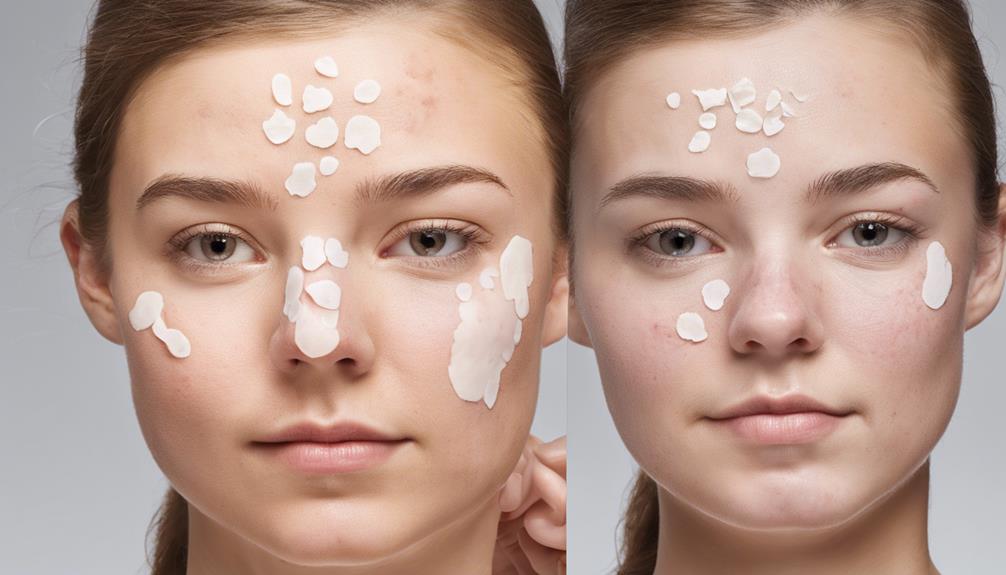
Using pimple patches can provide a range of benefits for individuals dealing with acne breakouts. These small, adhesive patches, often made of hydrocolloid, can be a valuable addition to your skincare routine. Here are three reasons why incorporating pimple patches can be advantageous:
- Reduction of Inflammation: Pimple patches work effectively to reduce inflammation, redness, and the appearance of pimples that have come to a head. This can help in making the acne less noticeable and promote quicker healing.
- Absorption of Pus and Oil: The patches are adept at absorbing pus and oil from pimples, aiding in faster healing. By drawing out these impurities, they can help in clearing up the skin more rapidly.
- Prevention of Scarring: Pimple patches create a barrier that prevents picking at the acne. This not only reduces the risk of scarring but also lowers the chances of infection, promoting overall skin health.
How Pimple Patches Speed Healing
Speeding up the healing process, pimple patches create a moist environment that promotes faster skin recovery. The hydrocolloid material in these patches plays an important role in this process by absorbing fluid from pimples, aiding in the healing of skin imperfections.
By acting as a protective barrier, pimple patches prevent picking, which can lead to scarring and infection, further accelerating the healing process. In cases of open, oozing lesions, these patches effectively drain the pimple, reducing inflammation and promoting quicker recovery.
Designed to absorb drainage from pimples and shield the affected area from external factors, pimple patches contribute significantly to the skin's healing process. Their ability to create an effective environment for the skin to repair itself efficiently makes them a valuable tool in promoting healthy and expedited healing of pimples.
Understanding Pimple Patch Ingredients
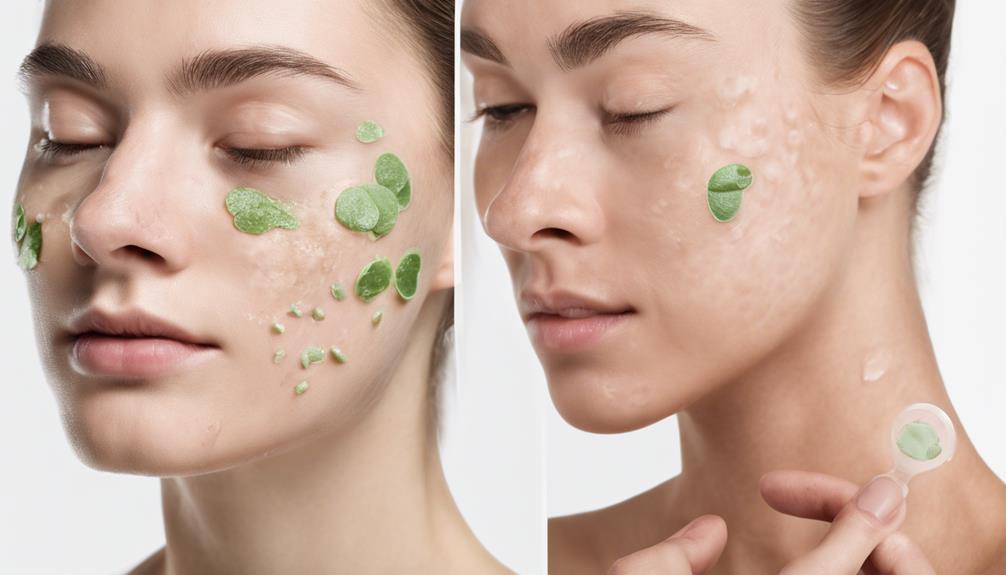
When examining pimple patch ingredients, one may notice the inclusion of various beneficial substances like salicylic acid and tea tree oil. These ingredients play vital roles in combating acne and promoting skin health. Here are three key components commonly found in pimple patches:
- Salicylic Acid: Known for its ability to unclog pores and reduce inflammation, salicylic acid is a fundamental ingredient in many pimple patches. It helps to exfoliate the skin and prevent further breakouts.
- Tea Tree Oil: With its natural antibacterial properties, tea tree oil targets acne-causing bacteria, aiding in the treatment of existing pimples and preventing new ones from forming.
- Hyaluronic Acid: This ingredient helps hydrate the skin and promote healing, making it an essential component in pimple patches. Hyaluronic acid assists in maintaining skin moisture levels and supporting the skin's barrier function.
Other beneficial ingredients like niacinamide and benzoyl peroxide further enhance the effectiveness of pimple patches in addressing various skin concerns.
Different Types of Pimple Patches
In exploring the world of pimple patches, a diverse array of types cater to specific acne concerns, offering a range of solutions tailored to different skin needs.
Hydrocolloid acne patches are effective for absorbing excess fluid and dirt from raised pimples with visible pus, promoting faster healing.
Medicated pimple patches, on the other hand, contain ingredients that target bacteria and inflammation, providing enhanced treatment for stubborn breakouts.
For those looking for more intensive therapy, microneedling pimple patches deliver active ingredients deeper into the skin, aiding in more thorough treatment. Additionally, these patches create a vacuum-like effect, flattening pimples and aiding in the effective draining of acne.
Tips for Proper Pimple Patch Application
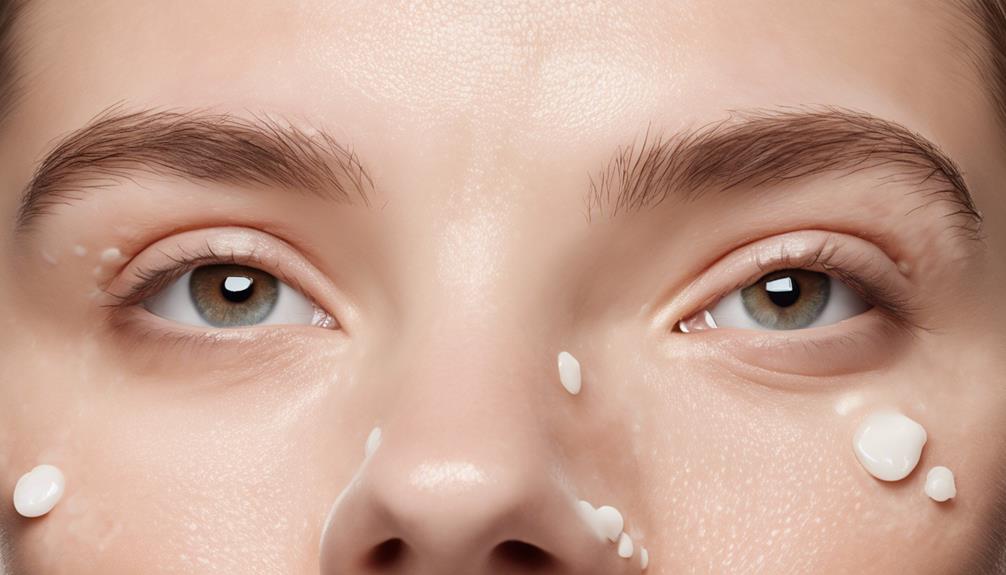
When applying pimple patches, it's crucial to prep the skin surface by cleansing and drying the area thoroughly.
Gently apply the patch to guarantee proper coverage and absorption, and leave it on overnight for the best results.
Following these steps consistently can help reduce inflammation and promote faster healing of pimples.
Prep Skin Surface
For best results, start by cleansing the skin surface with a gentle cleanser to remove any dirt, oil, or makeup before applying a pimple patch. It's important to make sure the skin is completely dry to enhance adhesion and effectiveness.
Here are three important tips to prep your skin surface for pimple patch application:
- Use a gentle cleanser to cleanse the skin surface thoroughly.
- Make sure the skin is completely dry before applying the pimple patch.
- Avoid using skincare products like moisturizers or serums on the area where the pimple patch will be placed for best results.
Apply Patch Gently
To guarantee effective adhesion and best results, gently applying pimple patches on a clean, dry skin surface is essential. Proper application helps the patches absorb fluids from the pimple, creating a barrier against external factors to prevent scarring. Below is a table summarizing how gentle application of patches can benefit the skin:
| Benefits of Gentle Patch Application |
|---|
| Helps Absorb Fluids |
| Creates a Barrier |
| Prevents Scarring |
Leave on Overnight
Gently applying pimple patches on clean, dry skin sets the foundation for effective adhesion, now leaving them on overnight maximizes their benefits for faster healing and reduced inflammation.
- Enhanced Healing: Overnight application creates a moist environment that accelerates the healing process.
- Reduced Inflammation: The hydrocolloid material in the patches absorbs impurities, helping to decrease inflammation.
- Minimal Disturbance: Sleeping with the pimple patches on guarantees maximum absorption while preventing interference with the healing process.
Can Pimple Patches Aggravate Acne?

How can pimple patches potentially worsen acne if not used correctly or if one has a sensitivity to the adhesive?
Pimple patches, if misused, can worsen acne by causing adverse reactions due to adhesive sensitivity. Using these patches incorrectly, like leaving them on for too long or applying them to non-oozing pimples, may exacerbate acne symptoms. Allergic reactions to the adhesive in pimple patches can lead to skin irritation, further aggravating acne.
It's important to recognize that pimple patches aren't a one-size-fits-all solution; they mightn't be suitable for every skin type and could potentially do more harm than good in certain situations. To prevent pimple patches from making acne worse, it's vital to carefully follow usage instructions, seek guidance from a dermatologist if experiencing adverse reactions, and discontinue use if the patches are aggravating acne symptoms.
Limitations of Pimple Patch Treatment
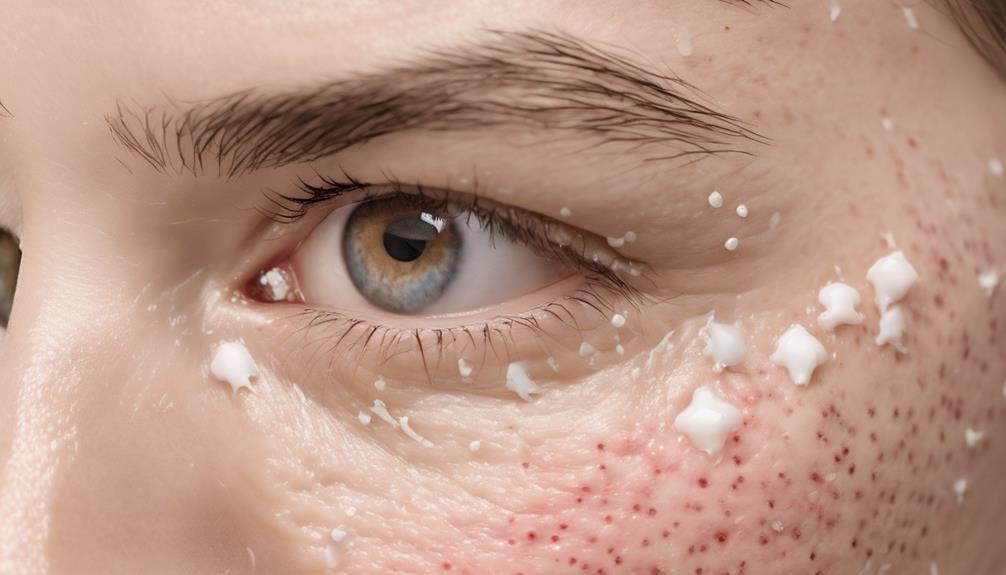
When considering the use of pimple patches, it becomes evident that their effectiveness is limited in addressing certain types of acne lesions and conditions.
- Pimple patches, typically made of a hydrocolloid material, are ineffective on closed lesions, blackheads, and non-oozing whiteheads. These types of acne require different treatment approaches.
- They function primarily as spot treatments, targeting specific pimples rather than preventing acne or clearing clogged pores. Therefore, they may not provide thorough care for all acne concerns.
- Pimple patches may have limited effectiveness for certain skin types and severe acne conditions. Individuals with sensitive skin should be cautious, as allergic reactions to the adhesive or skin irritation from ingredients like salicylic acid are possible negative outcomes.
In light of these limitations, it's important to view pimple patches as supplementary treatments rather than standalone solutions for acne management. Understanding their constraints can help individuals make informed decisions about incorporating them into their skincare routines.
Complementary Acne Treatment Options
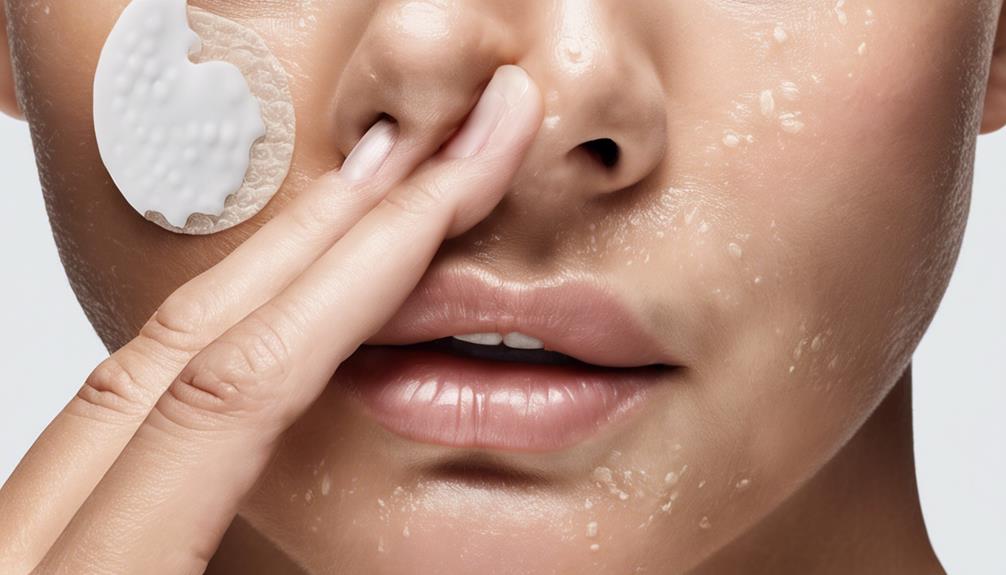
When exploring complementary acne treatment options, it's crucial to take into account skin-friendly remedies like adapalene and salicylic acid.
Natural skincare alternatives, such as foaming cleansers, can enhance the effectiveness of pimple patches by removing impurities from the skin.
Dermatologist-recommended solutions like cortisone injections and oral medications provide additional support for severe acne cases, optimizing the benefits of using pimple patches.
Skin-Friendly Acne Remedies
Skin-friendly acne remedies, such as pimple patches, provide effective complementary treatment options for targeting specific problem areas on the skin. These patches can work wonders as spot treatments for active pimples, absorbing excess oil and promoting faster healing.
Here are three reasons why pimple patches are a valuable addition to your skincare routine:
- Targeted Treatment: Pimple patches are designed to adhere to the skin directly over the pimple, delivering active ingredients precisely where they're needed.
- Absorb Excess Oil: By absorbing excess oil from the pimple, these patches help reduce inflammation and prevent further breakouts.
- Promote Healing: With their hydrocolloid technology, pimple patches create a moist environment that speeds up the healing process, minimizing the risk of scarring.
Natural Skincare Alternatives
Natural skincare alternatives like tea tree oil, witch hazel, green tea extract, and aloe vera complement pimple patches in treating acne effectively. These ingredients contain anti-inflammatory properties that help reduce acne. Essential oils such as lavender and chamomile offer antibacterial benefits for acne-prone skin. Natural exfoliants like sugar or oatmeal can unclog pores when used alongside pimple patches, preventing new breakouts.
Additionally, maintaining a balanced diet rich in fruits, vegetables, and omega-3 fatty acids supports overall skin health and complements acne treatment efforts. When combined with pimple patches, these natural skincare alternatives provide a holistic approach to managing acne and promoting healthier skin.
Dermatologist-Recommended Acne Solutions
In dermatology practice, pimple patches are frequently recommended by professionals as a supplementary treatment option for managing acne. These patches can help heal picked lesions and offer relief, particularly when used for cystic acne.
When considering pimple patches as a complementary treatment option, it's crucial to take note of the ingredients they contain. Some patches are medicated with ingredients like salicylic acid and tea tree oil, which can enhance their efficacy.
Dermatologists advise using pimple patches alongside other acne treatments as part of a complete skincare routine to maximize benefits and improve overall skin health. Using these patches judiciously and in combination with other treatments can contribute to more effective acne management.
User Reviews and Recommendations

Based on user feedback and recommendations, pimple patches have shown effectiveness in reducing inflammation and promoting faster healing of pimples. Users praise these hydrocolloid dressings for their ability to absorb excess fluid from the pimple, creating a protective barrier that supports wound healing. The hydrocolloid gel in the patches is believed to draw out impurities from clogged pores, helping to reduce the size and redness of the pimple.
| Benefit | User Feedback |
|---|---|
| Reduced Inflammation | Users report decreased redness and swelling after using pimple patches. |
| Faster Healing | Many users observe quicker recovery times for their pimples. |
| Prevention of Scarring | Positive feedback highlights the ability of patches to prevent scarring. |
| Easy to Use | Users find pimple patches convenient and simple to apply. |
| Discreet Treatment | Patches allow for discreet treatment without drawing attention to breakouts. |
Incorporating pimple patches into your skincare routine may offer targeted relief for pesky pimples, aiding in the healing process and preventing further skin damage.
Frequently Asked Questions
Do Pimple Patches Work on Unpopped Pimples?
Pimple patches work best on unpopped pimples with open, oozing lesions. They absorb fluid, promote faster healing, and act as a barrier to prevent picking.
Hydrocolloid material aids in drainage absorption. The healing environment benefits unpopped pimples the most.
Are Pimple Patches Actually Good for Acne?
Using pimple patches correctly is important for acne treatment, aiding in faster healing by absorbing drainage and creating a protective barrier. They work best on open, draining, or healing pimples, not as a preventive measure.
The hydrocolloid material promotes a moist environment for skin recovery. Using them as spot treatments is crucial.
How Long Does It Take for Pimple Patches to Work?
Pimple patches typically start showing results within 6-8 hours of application. Some users notice reduced inflammation and size of pimples overnight. They work best on open, draining pimples, aiding in faster healing.
The effectiveness may vary based on skin type and pimple severity. Consistent use can help accelerate healing and prevent scarring.
Do Dermatologists Recommend Pimple Patches?
Dermatologists do recommend pimple patches as a supplementary treatment for certain types of acne lesions. These patches are designed to help accelerate the healing process of open, draining pimples.
While not a primary solution for acne, they can aid in faster recovery when used correctly. It's essential to consult with a dermatologist for personalized acne management plans that may include the use of pimple patches alongside other treatments.
Conclusion
To sum up, pimple patches can be an effective tool in treating acne by absorbing excess oil and reducing inflammation. While they may not work for everyone, many users have seen positive results.
Remember, consistency is key when using pimple patches, and it's important to combine them with other acne treatments for best results.
So, next time you have a pesky pimple, give a pimple patch a try and see if it helps you on your journey to clearer skin. These small adhesive patches can work wonders by absorbing excess oil and extracting impurities from the blemish. Plus, they create a protective barrier that prevents you from picking at the pimple, which can lead to scarring. Many people have reported significant improvements after using pimple patches for clearer skin, making them a valuable addition to your skincare routine.

